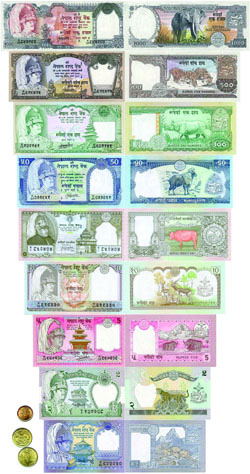 |
That wasn't the only shop avoiding kingly notes last week and the proprietor certainly wasn't the only one who had rushed to the bank with her cash. Six months ago, Nepal Rastra Bank (NRB) issued a directive to financial institutions to filter out notes bearing portraits of the former kings. It also urged the public to exchange such notes, setting 15 March 2011 as the deadline. But being the last-minute people that we are, it was only two weeks before the deadline that the directive received much attention.
Knowing that the money they had would soon lose its value was bound to trigger a frenzy. People had to queue outside banks to exchange the notes. Many had to wait a day or two to get the new notes. Traders stopped accepting them. It was then that a complaint was filed at the Commission for the Investigation of Abuse of Authority (CIAA) that the directive had not followed legal procedures and was simply inconveniencing the general public. It was the government not the central bank, the CIAA maintained, that had the authority to dismiss a particular banknote as legal tender. The directive was duly rolled back.
Nevertheless, the central bank was still able to replace Rs 61 billion worth of king-imprinted paper money. The move wasn't just politically motivated, however. The directive was part of the Clean Note Policy of the central bank, which aimed to replace old, worn-out notes. Indirectly, the strategy aimed to encourage the public to bring cash hoarded at home into circulation via deposits into the banking system, in order to ease the liquidity crisis.
NRB may be correct in its reasoning, but the time period allotted was too short to implement the directive. The central bank should have used the financial institutions to filter out the old notes instead of giving an ultimatum to the public. If indeed the bank wanted to bring publicly held cash into financial circulation, a nationwide campaign should have taken place to publicise the decision. This would have prevented the havoc created in the market.
A huge number of Nepalis were unaware of the decision even in the last week before the deadline, and did not know that money could still be exchanged at the central bank after the deadline. Some even incurred losses by exchanging their cash for lesser amounts than its face value, fearing that it would soon be demonetised. Two farmers from Nala VDC, for instance, gave away ten Rs 500 notes for just Rs 300 each in Banepa.
The market still circulates Rs 8 billion worth of notes with likenesses of the kings printed on them. The average life of a paper note is a year and a half, so the remaining notes will go out of circulation in due course. For now, the kings are here to stay.
READ ALSO:
Ncell sells



